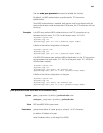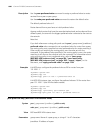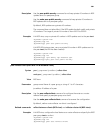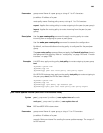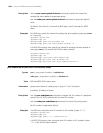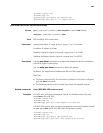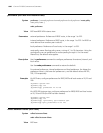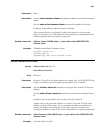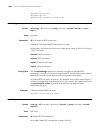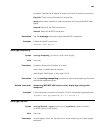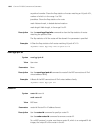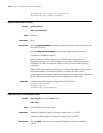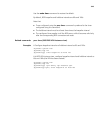
1007
Parameters None
Description Use the
reflect between-clients command to enable route reflection between
clients.
Use the
undo reflect between-clients command to disable this function.
By default, route reflection between clients is enabled.
After a route reflector is configured, it reflects the routes of a client to other
clients. If the clients of a route reflector are fully meshed, you need disable route
reflection between clients to reduce routing costs.
Related commands: reflector cluster-id (BGP view) and peer reflect-client (BGP/BGP-VPN
instance view).
Examples # Disable route reflection between clients.
<Sysname> system-view
[Sysname] bgp 100
[Sysname-bgp] undo reflect between-clients
reflector cluster-id (BGP view)
Syntax reflector cluster-id cluster-id
undo reflector cluster-id
View BGP view
Parameters cluster-id: Cluster ID of the route reflector, an integer from 1 to 4294967295 (the
integer is translated into an IP address by the system) or an IP address.
Description Use the
reflector cluster-id command to configure the cluster ID of the route
reflector.
Use the
undo reflector cluster-id command to remove the configured cluster
ID.
By default, each route reflector uses its router ID as the cluster ID.
Usually, there is only one route reflector in a cluster. The router ID of the route
reflector is the ID of the cluster. You can configure multiple route reflectors to
improve the stability of the network. In this case, using this command can
configure the identical cluster ID for all the route reflectors to avoid routing loops.
Related commands: reflect between-clients (BGP view) and peer reflect-client (BGP/BGP-VPN
instance view).
Examples # Set the cluster ID to 80.



